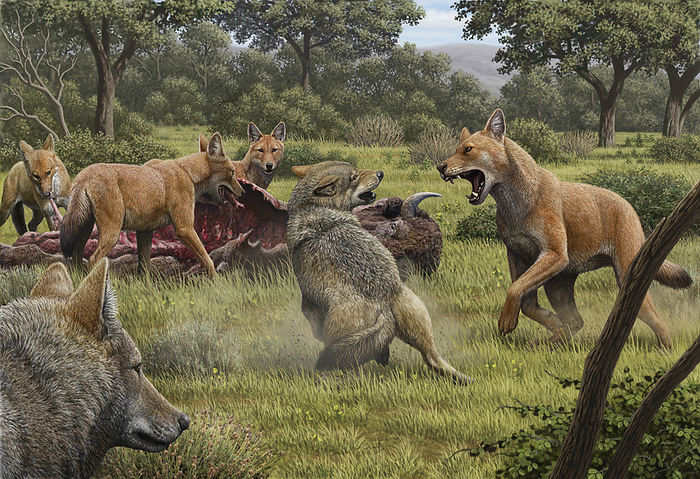
RM
Dire wolves defending prey, illustration
Illustration of prehistoric dire wolves (Aenocyon dirus) defending a bison (Bison sp.) carcass from grey wolves (Canis lupus) in North America during the Pleistocene epoch (c. 258 million to 11,700 years ago). the Pleistocene epoch (c. 2.58 million to 11,700 years ago). Dire wolves lived in North America from around 125,000-9,500 years ago and were of similar size to the extant grey wolf. Their extinction occurred between the late Pleistocene and early Holocene and may have resulted from climate change and the loss of habitat. Their extinction occurred between the late Pleistocene and early Holocene and may have resulted from climate change and the loss of habitat and prey.

More
Top Categories
